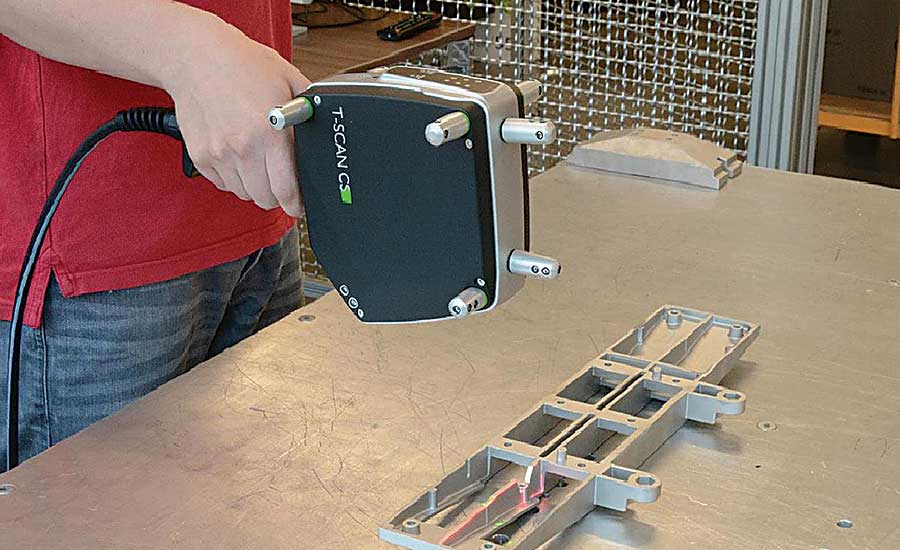From its headquarters in Altheim, Austria, Wiesner-Hager Möbel GmbH serves customers worldwide as one of Europe’s most successful seating furniture manufacturers. The company exports 56 percent of its products, provides office consulting and interior design services, and will celebrate a century of assembling top-notch furniture in 2021.
Equally important to Wiesner-Hager’s plant managers are constantly improving product quality and reducing time to market. One way they’ve met both challenges is by replacing manual measurement tools with laser-based ones, which Günter Weilbold, quality assurance manager at Wiesner-Hager, says are much quicker and more precise.
Earlier this year, for example, workers began using the versatile T-Scan CS+ 3d digitalization system from Carl Zeiss Optotechnik GmbH in a wide range of applications. These include inspecting incoming goods and development parts, tool and die making, prototype design, and reverse engineering.
The system includes a handheld scanner, a tracking camera and an optional tactile touch probe. After a worker scans the part surface with an integrated noncontact diode laser, the tracking camera detects the scanner position and calculates 3D surface data using triangulation. The scanner captures this data at a rate of 210,000 points per second. For tactile sensing of additional individual part points, such as perforated edges or impervious recesses, the touch probe is used.
“After three days of training, we were already quite good at using the system,” notes Weilbold. “After a month of self-directed study, we felt like experts due to the scanner’s ease of operation.”
He says that the system’s high-speed measurement and process accuracy enables the company to detect quality problems in production earlier than before and correct them more quickly. It also allows Wiesner-Hager to bring products to market faster and more cost-effectively.
The system scanner measures to a depth of ±50 millimeters, with a mean working distance of 150 millimeters. Line width can be up to 125 millimeters, and line frequency up to 330 hertz. Laser wavelength is 658 nanometers.
Weilbold says that Wiesner-Hager likes the scanner’s compact design and easy accessibility, along with its high-quality components that resist wear and require little maintenance. Besides being easy to calibrate, the scanner features colin3D software that supports real-time interfaces and allows easy integration into existing manufacturing processes.
Zeiss also makes the T-Track CS+ and LV optical tracking systems to use in conjunction with the T-Scan system. The former performs high data processing of small items, while the latter is for large-format objects and has a tracking volume of up to 35 cubic meters.
For more information on laser scanning systems, call 800-327-9735 or visit http://optotechnik.zeiss.com.


